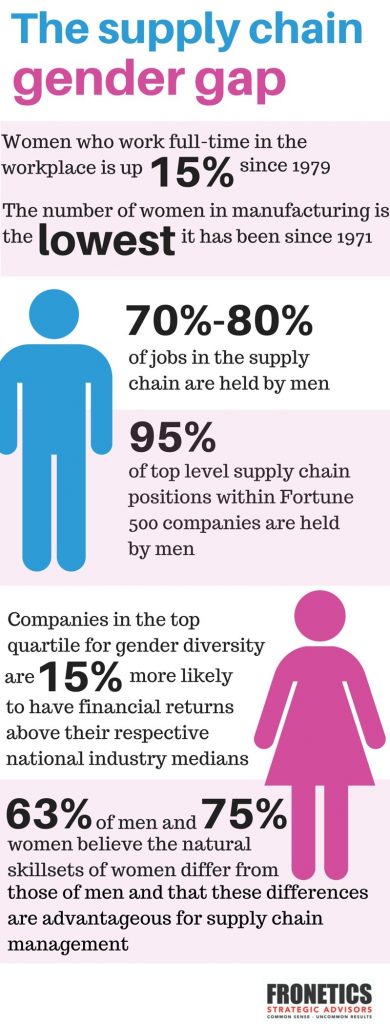
by Elizabeth Hines | Mar 10, 2016 | Blog, Manufacturing & Distribution, Strategy, Supply Chain, Talent

Manufacturing could offer a career with upward potential for STEM students at low-profile colleges.
The college graduates of 2015 were the most indebted ever — until the next round of grads wave their diplomas in the spring. But is sinking deep into debt really the ticket to a great career? If you have the means (and brains) to invest in an Ivy League degree, all stats seem to indicate you get ample payback for the $200,000-plus expense.
But among those high school grads who may not qualify for generous financial aid packages and at the same time cannot afford — or even want — an Ivy League degree, there are still lucrative options, especially if they study science, technology, engineering, and math (STEM).
The skills gap in U.S. manufacturing, for example, is well known. While as many as 60% to 70% of executives say their current employees lack sufficient skills in technology, computer, and math, the problem is exacerbated by the lack of qualified job prospects — an expected 2 million manufacturing jobs will go unfilled due to the talent gap during the next decade, according to a Deloitte study.
As I’ve said before, herein lies opportunity. There is no reason seeking a career in manufacturing should break the bank if students weigh their choices wisely. Picking a low-profile school may “pay off big both in terms of getting a good job and salary,”according to John Walsik, a Forbes contributor and author of The Debt-Free Degree.
The opportunity is best illustrated by Business Insider’s recent list of underrated colleges in America in which the US News and World Report’s rankings of the best universities was compared with PayScale’s 2015-2016 College Salary Report. Rather than pursuing degrees from the highest rated schools, high school grads should also consider schools that, although ranked relatively low on the US News list, yield high mid-career salaries.
Interestingly, Missouri University of Science and Technology, New Jersey Institute of Technology, and University of Massachusetts at Lowell, known for their science and engineering programs, all ranked in the top 5 (Pace University in New York City topped the list), with mid-career median salaries ranging from $94,700 to $102,000. Within six months of graduation, for example, 80% of New Jersey Institute of Technology graduates were either employed — top employers include IBM and ExxonMobil — or enrolled in graduate programs.
A college degree from a prestigious school means little unless your earnings quickly make it worthwhile. If only manufacturing could shake its lackluster reputation, a growing number of students may discover it holds the key to a career with a lot of upward potential — without necessarily going into big debt.
What is your take on the cost of college versus the payoff?
A version of this post previously appeared at EBN Online.

by Fronetics | Jan 12, 2016 | Blog, Leadership, Marketing, Strategy, Supply Chain, Talent

Recruiting and retaining top talent is one of the largest issues the supply chain faces today. It has, in many ways, become an industry of gaps: skills, talent, and gender, to name a few. How can companies secure their future by acquiring, developing, and keeping employees with the potential to undertake future leadership roles?
Fronetics Strategic Advisors works with clients to understand and execute on talent acquisition, performance management, learning and development, and succession management. We also work with clients to design and develop roles and responsibilities, on leadership development, mentoring and counseling, and on performance management and compensation strategies.
Here are our most-read talent articles of 2015:
While the number of full-time women in the workforce is up 15% since 1979, the number of women in the manufacturing sector is the lowest it has been since 1971.The gender gap extends more broadly to the supply chain, as well, with 70% and 80% of positions held by men. This article examines the talent crisis within the industry as an opportunity to help close the gender gap, and offers suggestions for building that bridge. Read the full article.
This interview with Rodney Apple, founder of the SCM Talent Group and supply chain recruiter for the majority of his 19-year career within the staffing industry, examines the challenges facing the industry and opportunities to address the talent crisis moving forward. Read the full article.
The outlook seems dire: by 2025, 60 million baby boomers will exit the workforce, leaving a gigantic gap when 40 million millennials take their place. What’s more, as few as 20% of the workforce will possess the broad range of skills required of 60% of all new supply chain jobs. The good news is that this looming crisis represents an ideal opportunity for recent college grads and mid-level supply chain management. Companies hoping to appeal to top candidates in the future should be proactive about meeting their professional needs through initiatives like competitive salaries and cross-functional training — or else, they might miss out. Read the full article.
Zappos offers new hires a $4,000 bonus to quit after an initial training program — and it actually has helped them retain top talent. Offering an early out to employees can be an effective method to detect personnel issues up front and ultimately can save your company from a major financial loss in the future. Read the full article.
When it comes to your career, connections matter. This article lists five reasons why building a strong network is crucial to your professional success. Read the full article.
Millennials — or, those born after 1981 — potentially could breathe new life into the graying supply chain industry. This article examines who millennials are and how companies might attract and retain talent within this oft-misunderstood generation. Read the full article.
Promising employees expect more from their employers when they outperform their peers — and not just in terms of compensation (though that is very important). When those expectations are met with disappointment, the company is at risk for losing top talent. This article discusses strategies for mitigating the loss of talented employees. Read the full article.
According to one study, only 12.5% of companies in the supply chain industry engage in formal succession planning, or the process of identifying top internal performers with the potential to fill key leadership positions. With the dearth of talent facing the supply chain, employers would be wise to invest in succession planning (and their most promising employees) — particularly through these three aspects of the process. Read the full article.
Focusing on education and training, employee retention and growth, and rethinking the talent pool itself does not address the bigger issue in the supply chain skills gap: the industry just isn’t perceived as sexy. What can companies do to overhaul their image and attract new and qualified talent? Read the full article.
Replacing employees is extremely costly — anywhere from 50 to 400% of their annual salaries, it is estimated — yet more than 2 million people voluntarily leave their jobs each month. Companies who are not tending to their human resource assets may be taking a major financial hit. Here are five employee retention strategies to help create a culture where employees are satisfied and interested in working for you long term. Read the full article.
![The supply chain gender gap [Infographic]](https://fronetics.com/wp-content/uploads/2024/10/supply-chain-gender-gap.jpg)
by Fronetics | May 26, 2015 | Blog, Strategy, Supply Chain, Talent

The number of women who work full-time in the workforce is up 15% since 1979. In the manufacturing sector, the story is very different. The number of men working in the manufacturing sector has increased, while the number of women working in the sector has declined. The number of women in the sector now stands at the lowest it has been since 1971.
Looking more broadly at the supply chain industry, it is clear that there is a significant gender gap. Between 70% and 80% of positions within the supply chain industry are held by men and 95% of top level supply chain positions within Fortune 500 companies are held by men. By comparison, men hold 85% of all executive officer positions within Fortune 500 companies.
The dearth of women working, at all levels, in the supply chain is not because women do not have the skillset and ability to succeed within the industry. Women are as capable as men when it comes to working within the supply chain industry. Indeed, it has been put forth that women are better suited for roles in supply chain management than men. Research conducted by SCM World found that the majority of men (63%) and women (75%) believe that the natural skillsets of women differ from those of men and that these differences are advantageous for supply chain management. Similarly, new research by McKinsey & Company found that companies in the top quartile for gender diversity are 15%more likely to have financial returns above their respective national industry medians.
The talent gap; an opportunity
According to Supply Chain Insights 60% of companies within the supply chain industry have job openings and 51% of companies are seeing an increase in turnover of supply chain leaders. Looking ahead, there are an estimated 1.4 million new supply chain workers needed by 2018 and the Bureau of Labor and Statistics predicts that the number of logistics jobs is expected to grow by 22 percent by 2022 – nearly double the rate of other professions. The supply chain talent gap arguably presents an opportunity to increase the number of women in positions throughout the supply chain and close the gender gap. The big question is how.
Addressing the gender gap
Here are 4 ways the supply chain industry can address the gender gap:
1. Increase visibility and tackle the image problem
93% of most companies’ supply chain is invisible. This statistic could also be used to reflect the number of people who know what the supply chain industry is; few people outside of the industry know what the supply chain is and what career opportunities there are. This needs to change.
To attract new talent the industry needs to make people aware of the supply chain – what it is, the integral role it plays in business, and the various opportunities there are within the industry.
2. Rethink talent acquisition and promotion
Within the supply chain industry the typical path up the corporate ladder has started out on the shop floor. If the industry is going to attract women and new talent companies need to look not only beyond their four walls, but also outside of the industry itself. When it comes to talent acquisition smart companies focus on the qualities of the individual and what they can bring to the table.
3. Move from talk to action
Battalia Winston’s Susan Medina and Peter Gomez point out that: companies without a proactive diversity-building strategy will fall victim to common-pitfalls and will fall flat.
“It’s important to acknowledge that diversity building is a proven growth strategy, not a superficial endeavor. But paying lip service to diversity and inclusion without a proactive strategy will lead to failure. Organizations need to prioritize, collaborate, and think long term.”
4. Take control
Women tend only to apply for jobs that they feel they are a 100% match; men do so even when they meet no more than 60% of the requirements. Similarly, men tend to be promoted more often than women simply because they speak up and ask for a promotion.
Women need to take responsibility for themselves and for their own careers. Women need to apply for jobs with confidence, even when they don’t have 100% of the requirements. They also need to speak up and ask for a promotion.
Kevin O’Marah, Chief Content Officer at SCM World, sums up the issue of the supply chain gender gap nicely: “Women in supply chain are too few, and their path to the top is at least partially blocked. Yet we all seem to think they bring something to the party that will make it better. The time to break this problem down is now.”

![The supply chain gender gap [Infographic]](https://fronetics.com/wp-content/uploads/2024/10/supply-chain-gender-gap.jpg)
by Fronetics | May 26, 2015 | Blog, Strategy, Supply Chain, Talent

The number of women who work full-time in the workforce is up 15% since 1979. In the manufacturing sector, the story is very different. The number of men working in the manufacturing sector has increased, while the number of women working in the sector has declined. The number of women in the sector now stands at the lowest it has been since 1971.
Looking more broadly at the supply chain industry, it is clear that there is a significant gender gap. Between 70% and 80% of positions within the supply chain industry are held by men and 95% of top level supply chain positions within Fortune 500 companies are held by men. By comparison, men hold 85% of all executive officer positions within Fortune 500 companies.
The dearth of women working, at all levels, in the supply chain is not because women do not have the skillset and ability to succeed within the industry. Women are as capable as men when it comes to working within the supply chain industry. Indeed, it has been put forth that women are better suited for roles in supply chain management than men. Research conducted by SCM World found that the majority of men (63%) and women (75%) believe that the natural skillsets of women differ from those of men and that these differences are advantageous for supply chain management. Similarly, new research by McKinsey & Company found that companies in the top quartile for gender diversity are 15%more likely to have financial returns above their respective national industry medians.
The talent gap; an opportunity
According to Supply Chain Insights 60% of companies within the supply chain industry have job openings and 51% of companies are seeing an increase in turnover of supply chain leaders. Looking ahead, there are an estimated 1.4 million new supply chain workers needed by 2018 and the Bureau of Labor and Statistics predicts that the number of logistics jobs is expected to grow by 22 percent by 2022 – nearly double the rate of other professions. The supply chain talent gap arguably presents an opportunity to increase the number of women in positions throughout the supply chain and close the gender gap. The big question is how.
Addressing the gender gap
Here are 4 ways the supply chain industry can address the gender gap:
1. Increase visibility and tackle the image problem
93% of most companies’ supply chain is invisible. This statistic could also be used to reflect the number of people who know what the supply chain industry is; few people outside of the industry know what the supply chain is and what career opportunities there are. This needs to change.
To attract new talent the industry needs to make people aware of the supply chain – what it is, the integral role it plays in business, and the various opportunities there are within the industry.
2. Rethink talent acquisition and promotion
Within the supply chain industry the typical path up the corporate ladder has started out on the shop floor. If the industry is going to attract women and new talent companies need to look not only beyond their four walls, but also outside of the industry itself. When it comes to talent acquisition smart companies focus on the qualities of the individual and what they can bring to the table.
3. Move from talk to action
Battalia Winston’s Susan Medina and Peter Gomez point out that: companies without a proactive diversity-building strategy will fall victim to common-pitfalls and will fall flat.
“It’s important to acknowledge that diversity building is a proven growth strategy, not a superficial endeavor. But paying lip service to diversity and inclusion without a proactive strategy will lead to failure. Organizations need to prioritize, collaborate, and think long term.”
4. Take control
Women tend only to apply for jobs that they feel they are a 100% match; men do so even when they meet no more than 60% of the requirements. Similarly, men tend to be promoted more often than women simply because they speak up and ask for a promotion.
Women need to take responsibility for themselves and for their own careers. Women need to apply for jobs with confidence, even when they don’t have 100% of the requirements. They also need to speak up and ask for a promotion.
Kevin O’Marah, Chief Content Officer at SCM World, sums up the issue of the supply chain gender gap nicely: “Women in supply chain are too few, and their path to the top is at least partially blocked. Yet we all seem to think they bring something to the party that will make it better. The time to break this problem down is now.”


by Fronetics | Jul 10, 2014 | Blog, Marketing, Social Media, Strategy, Supply Chain
Kale is the hippest and trendiest of vegetables.
The dark leafy vegetable has received Bon Appetit’s dish of the year award, it was served at the White House Thanksgiving, and it has received ringing endorsements by celebrities and celebrity chefs. Kale also has its own T-shirt, lawsuit, and day. Did I mention the book? 50 Shades of Kale is an Amazon bestseller.

The appearance of kale on restaurant menus has increased by 400 percent since 2008. A recent Guardian article reported that sales of kale at Marks & Spencer are already up 32 percent on the same period last year and that it expects this rise to continue in the longer term. Similarly, at Waitrose, sales of kale are up 20 percent year on year.
How is it that kale is cool? Much of it has to do with re-branding – communicating a new image for the vegetable and communicating new (and more flavorful) uses.
The supply chain is suffering from an image problem. If we are going to attract new talent we need to make an effort to make the supply chain hip. The supply chain should look to kale for inspiration. If a leafy green vegetable can realize such a rapid ascent to popularity, so too can the supply chain industry.



![The supply chain gender gap [Infographic]](https://fronetics.com/wp-content/uploads/2024/10/supply-chain-gender-gap.jpg)

